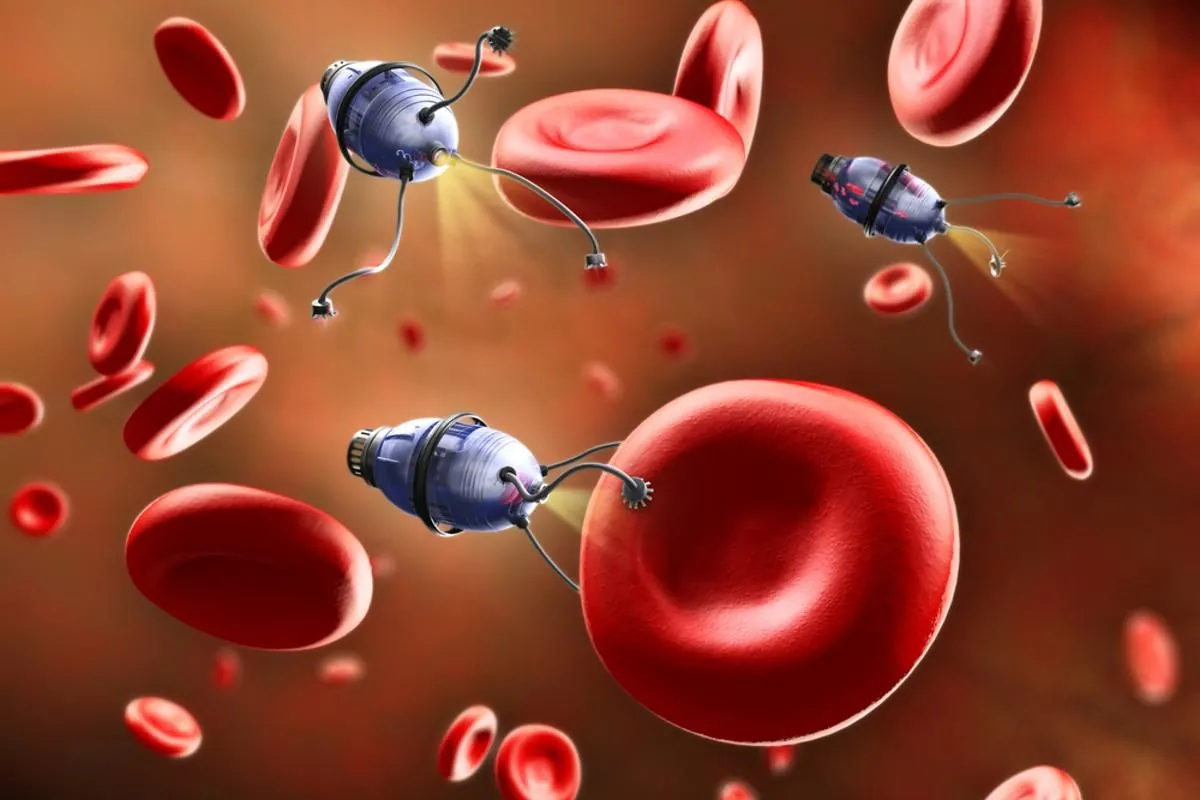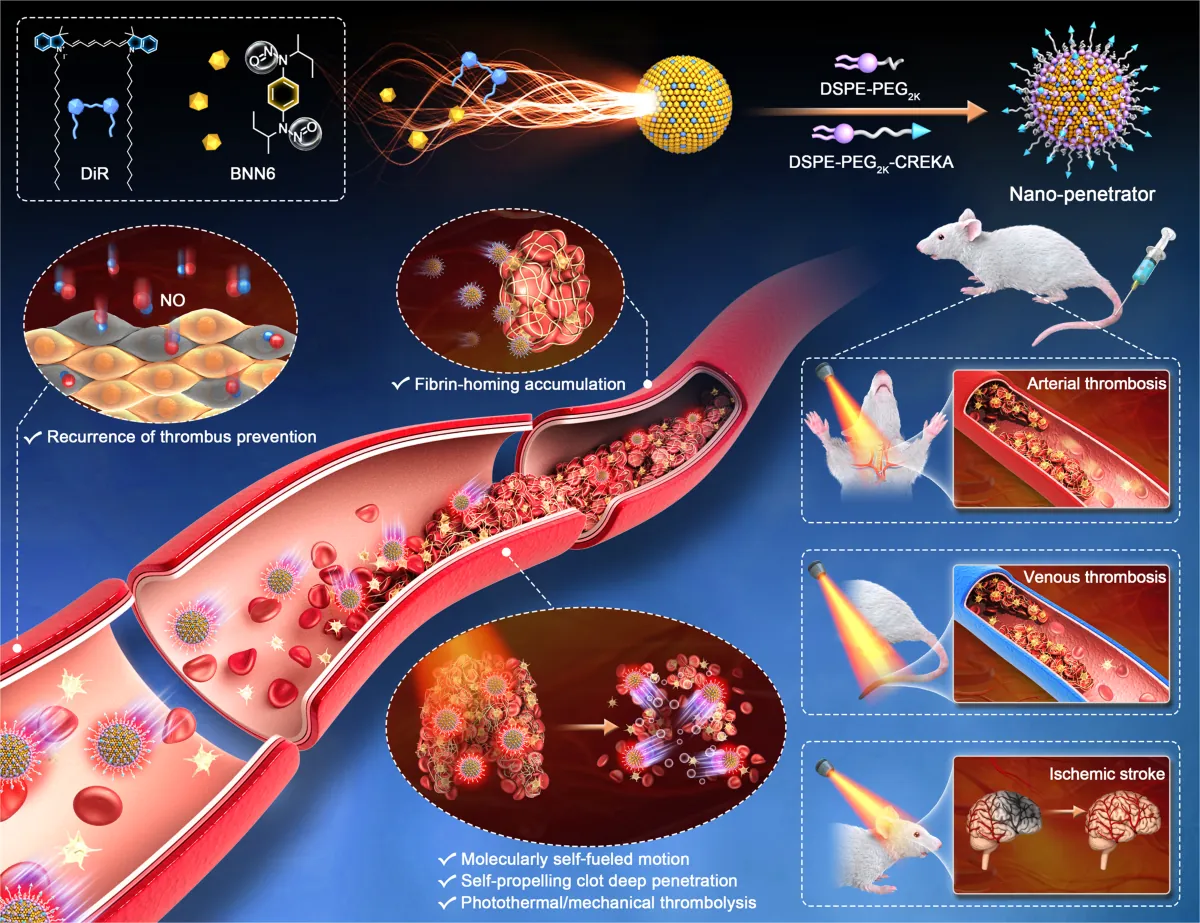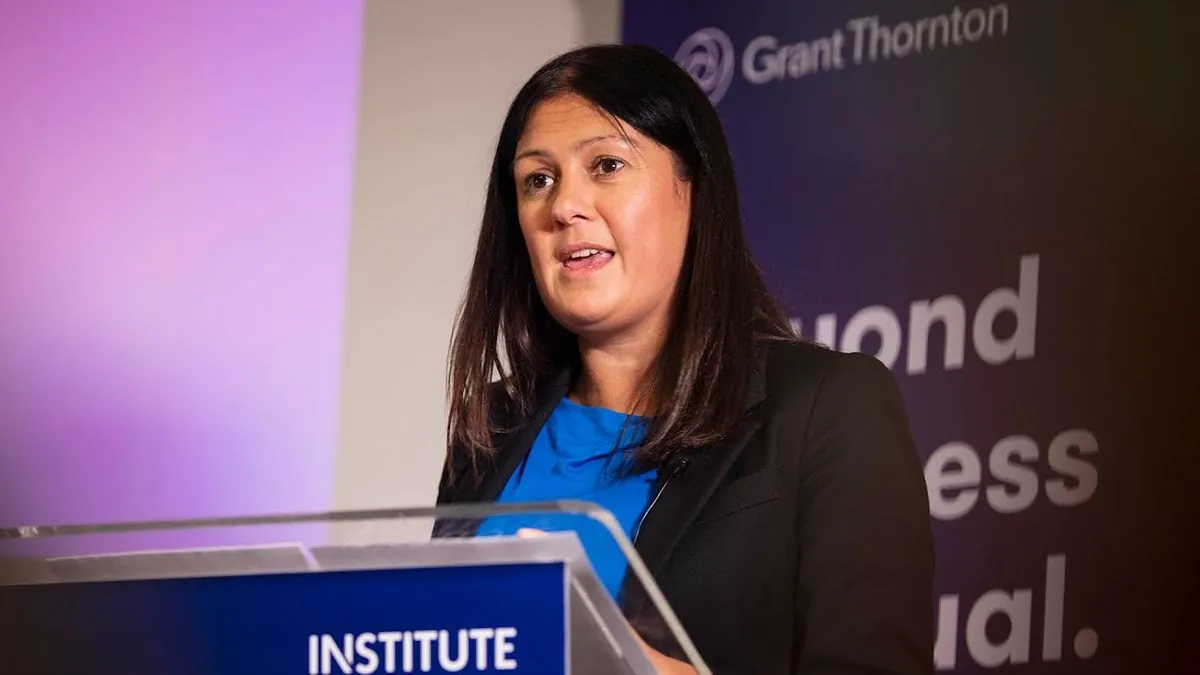Tiny Magnetic Nanobots: A Breakthrough in Brain Aneurysm Treatment
University of Edinburgh researchers develop minuscule magnetic nanobots for brain aneurysm repair. These iron oxide spheres, smaller than red blood cells, can be guided to deliver clotting enzymes precisely, offering a potential alternative to conventional treatments.

Researchers at the University of Edinburgh have developed a groundbreaking medical technology: minuscule magnetic nanobots capable of repairing brain aneurysms. These tiny spheres, approximately one-twentieth the size of a human red blood cell, represent a significant advancement in targeted medical interventions.
The nanobots are composed of iron oxide, a material that becomes magnetic when exposed to an external magnetic field. Dr. Qi Zhou, co-leader of the study from the University of Edinburgh's School of Engineering, explains the potential impact:
"Nanorobots are set to open new frontiers in medicine – potentially allowing us to carry out surgical repairs with fewer risks than conventional treatments and target drugs with pinpoint accuracy in hard-to-reach parts of the body."
These nanobots carry thrombin, an enzyme crucial for blood clotting and inflammation. Thrombin, first discovered in 1845, plays a vital role in the nanobots' function. The use of iron oxide in medical applications isn't new; iron oxide nanoparticles have been utilized in MRI contrast agents since the 1980s.

In laboratory tests, researchers injected several hundred billion nanobots into an artery. Using magnets and real-time ultrasound scans, they guided the swarm to the aneurysm site. Once there, the nanobots clustered together and were heated to over 43°C (109°F) using an alternating magnetic field. This temperature, well below the Curie temperature of iron oxide (585°C), melted their protective coating, releasing the clotting drug at the precise location.
Brain aneurysms, bulges in weakened blood vessel areas, pose a significant health risk. In the UK, about 2-3% of people develop a brain aneurysm in their lifetime, with approximately 1 in 15,000 experiencing a rupture annually. The concept of targeted drug delivery, first proposed in 1906, finds a new application in this innovative approach.
Current treatments for brain aneurysms involve threading tubes through blood vessels to insert metal coils or stents. However, these methods can lead to complications such as implant rejection and the need for anti-clotting medications. The first successful treatment of a brain aneurysm was performed in 1937, and the first stent was implanted in a human coronary artery in 1986.
The potential applications of this technology extend beyond aneurysm treatment. Researchers envision using nanobots to repair other organs and blood vessels, and to deliver medications to specific locations in the body. The team is also developing nanorobots to remove blood clots, which could revolutionize stroke treatment.
As research progresses, the medical community eagerly anticipates the transition from animal trials to human testing. This advancement could mark a new era in medical interventions, offering less invasive and more precise treatment options for conditions that were once considered highly risky or inoperable.


































